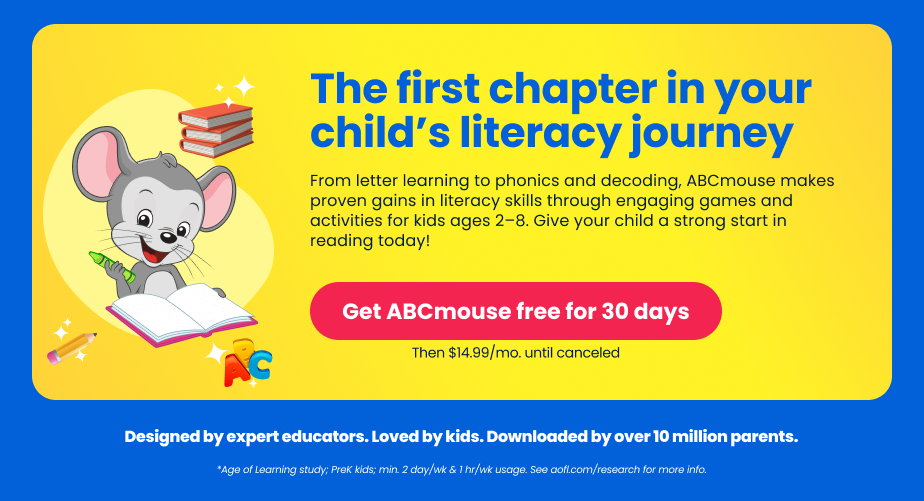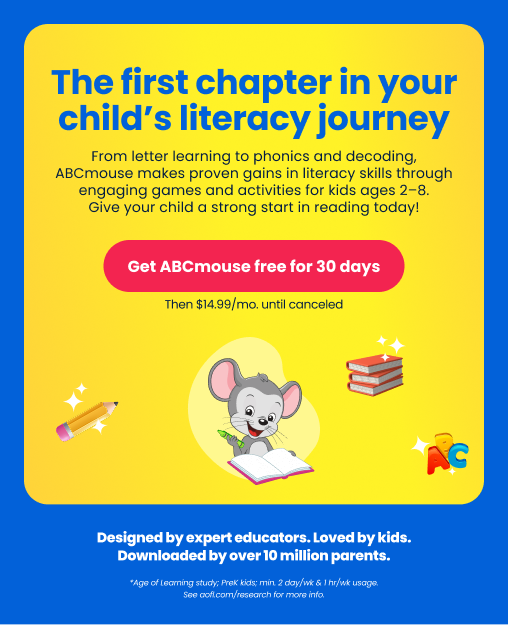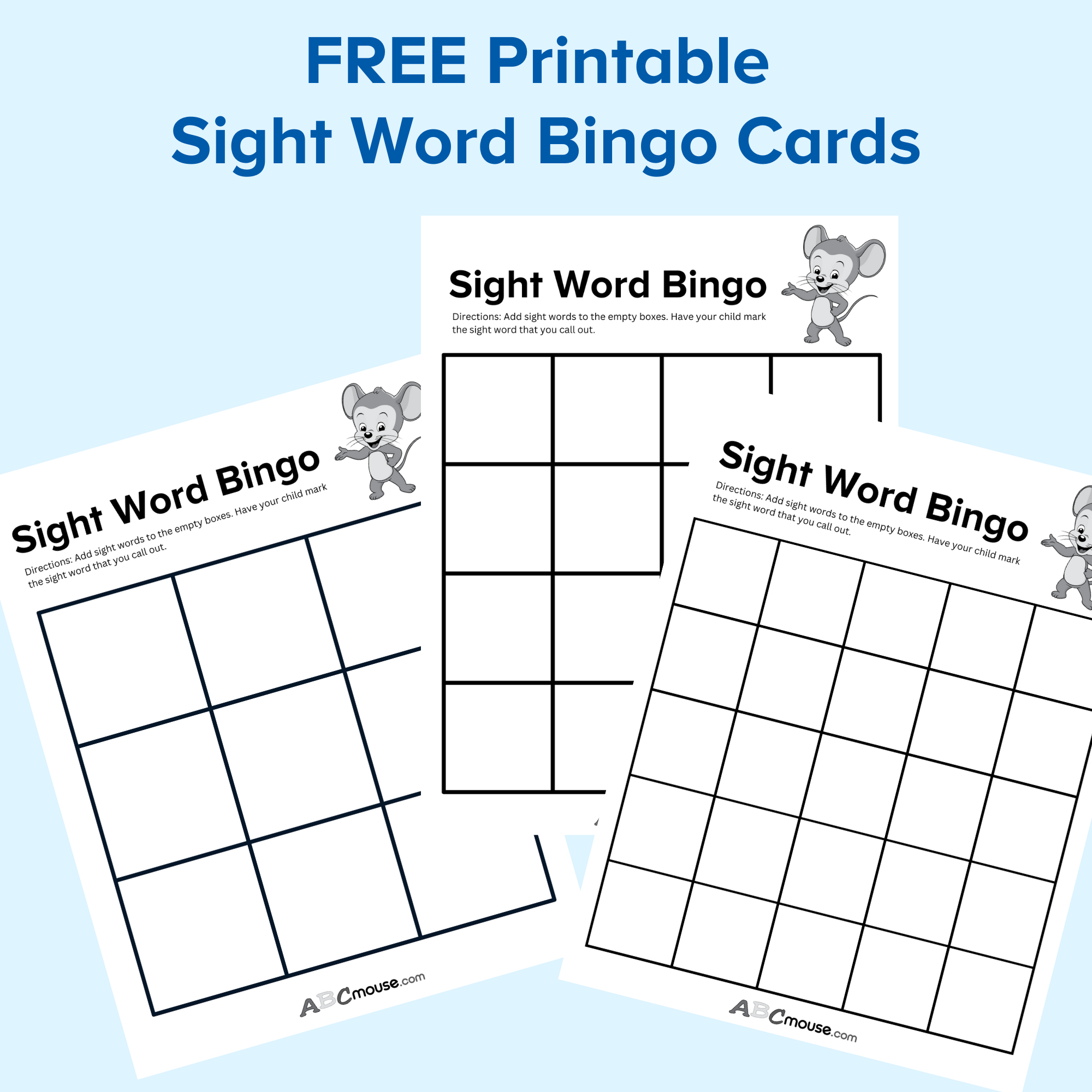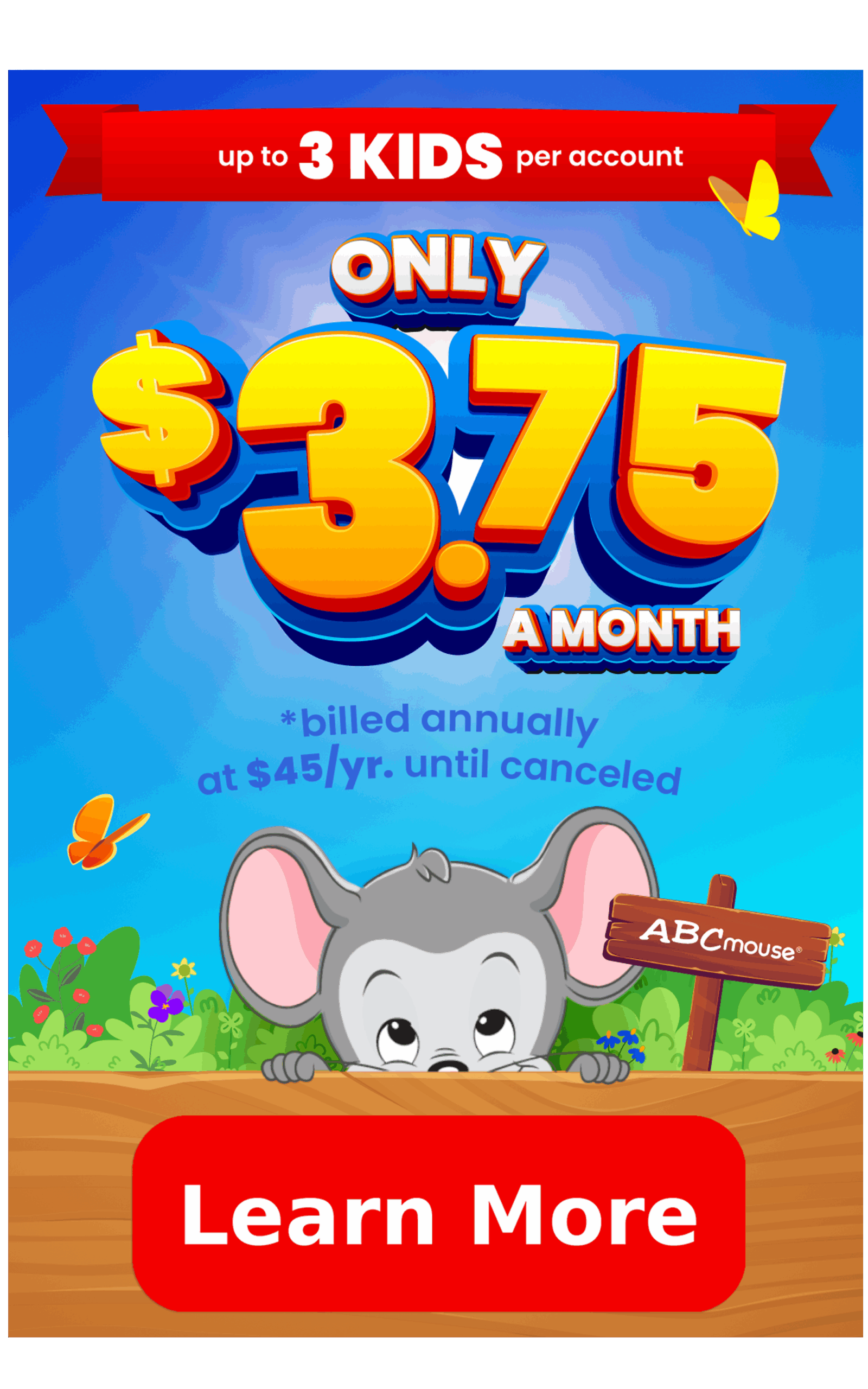
Free Sight Word Printables, Activities, and Games
Learn how sight words can help your child on their reading journey and get free sight words lists and activities to make learning more engaging.
Learning to read requires an extensive literacy framework and a lot of practice. Early reading instruction typically begins with introducing children to the letters and sounds of the alphabet and simple, frequently-used words, which are often referred to as sight words or high-frequency words.
While learning to read involves a variety of components, high-frequency words are an important tool in helping children on their literacy journey.

What Are Sight Words?
Traditionally, sight words are known as words that children frequently encounter in books and conversations and learn to recognize on sight. Current best practices have replaced memorization of words by sight with direct instruction of the sounds and patterns in the words children encounter most frequently when reading.
The term “sight words” is increasingly being replaced with the phrase “high-frequency words,” specifying words that children encounter frequently, not just words they know by sight. You might also know them as star, core, or popcorn words (because they pop up so often). Learn more about high-frequency words and get a list of the first 100 high-frequency words your child should know here.
When introducing high-frequency words, keep in mind that children learn at different rates and some high-frequency words may be easier for your child to master than others. Follow your child’s lead on what words they’re ready to tackle and consider slowing down or reviewing known words if they get frustrated.
Can You Sound Out Sight Words?
For years, sight words were viewed as those that children should simply memorize. Some research now suggests that these high-frequency words are best learned using the letter sounds and phonetic rules that children are familiar with. This way, children focus on breaking sight words apart and learning the sounds each piece of the word makes rather than trying to memorize one whole new word.
However, some high-frequency words are trickier, like the word “are,” and don’t follow traditional letter-sound rules. The tips in our How to Teach Sight Words post offer guidance on how to teach both decodable and irregular sight words.
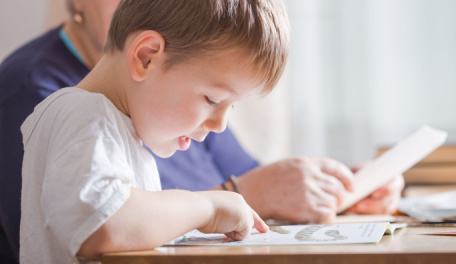
Is My Child Ready to Learn Sight Words?
Preschool is the earliest that high-frequency words should be taught, and they should only be introduced if your child is becoming familiar with phonics. In other words, your child first needs to understand that words are made of sounds, be able to hear the individual sounds in words, know which sounds a few specific letters stand for, and then look for those sounds in high-frequency words.
The Benefits of Learning Sight Words
Learning high-frequency words provides numerous benefits for young learners–it enhances reading speed and fluency, improves comprehension, and can build a strong foundation for advanced reading.
“One of the greatest benefits of using high-frequency words is that once kids are given permission to quickly recognize these frequently-occurring words, it frees up their cognitive energy to focus on the words they need to actively “sound out” without being overwhelmed,” says Dr. Nika Fabienke, Senior Director of Curriculum Planning and Design, of ABCmouse.
ABCmouse Sight Word Printables and Activities
ABCmouse provides high-frequency word resources for children in preschool through second grade. From sight word lists you can print out and practice at home to sight word worksheets and games, you’ll find a variety of resources to help your child continue building their reading skills. If you’re looking for more activities to help grow your child’s reading skills, this list of fun reading activities for preschool through second grade can help.
Printable Sight Word Lists
Getting familiar with high-frequency words can help children recognize them in the future. These sight word lists Remember, when teaching a word for the first time, use a phonetic approach to spelling it out first.
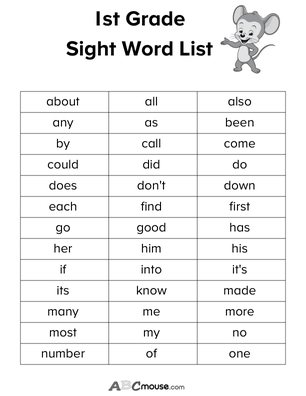
Free Sight Word Activities
Making the learning process enjoyable is important for young children, as it enhances their engagement and retention. Try the following activities to add an element of fun to learning high-frequency words.
Printable Sight Word Worksheets
From worksheets for preschoolers to printable sight word coloring pages for kindergarten and up, these free printable sight word worksheets make practicing with new words more fun and engaging.
Sight Word Worksheets for Preschoolers
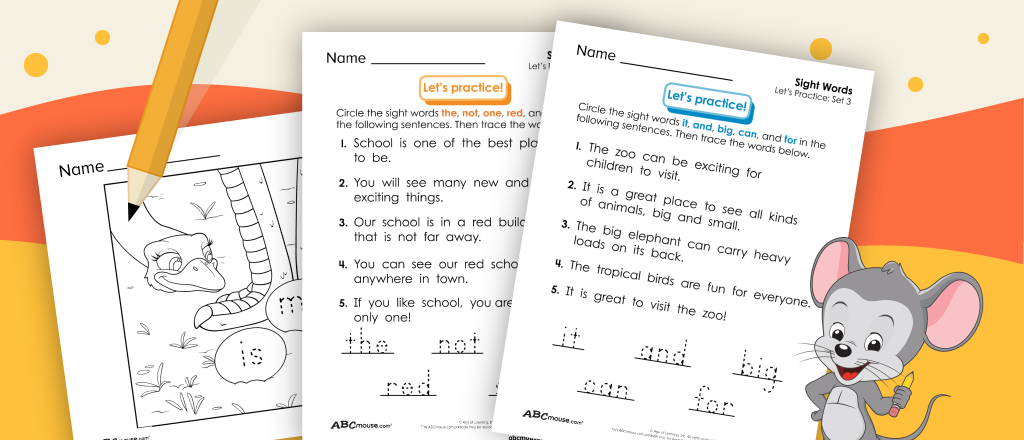
For preschoolers ready to work on sight words, these worksheets offer a variety of ways to practice. Some worksheets may require help from adults.
Color-by-Sight Word Worksheets
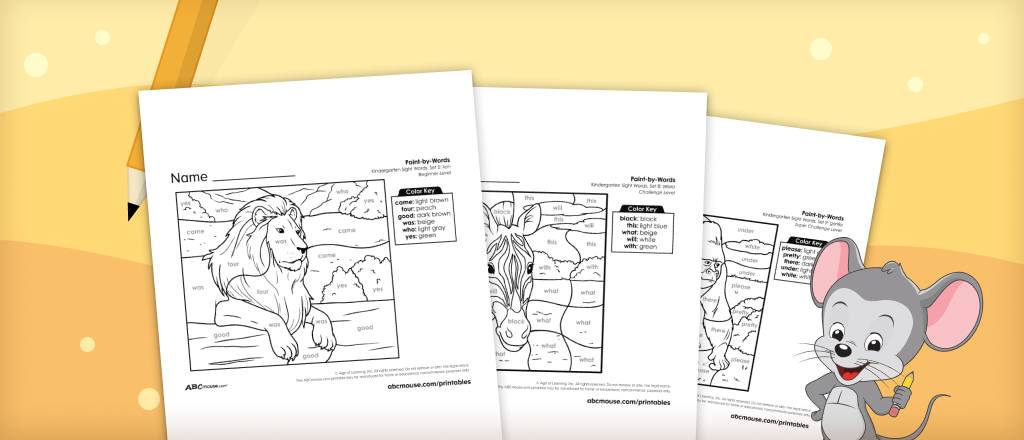
Kindergarten Level
From beginner to challenge to super challenge, kindergarteners will enjoy bringing illustrations of animals to life while working on their sight word skills.
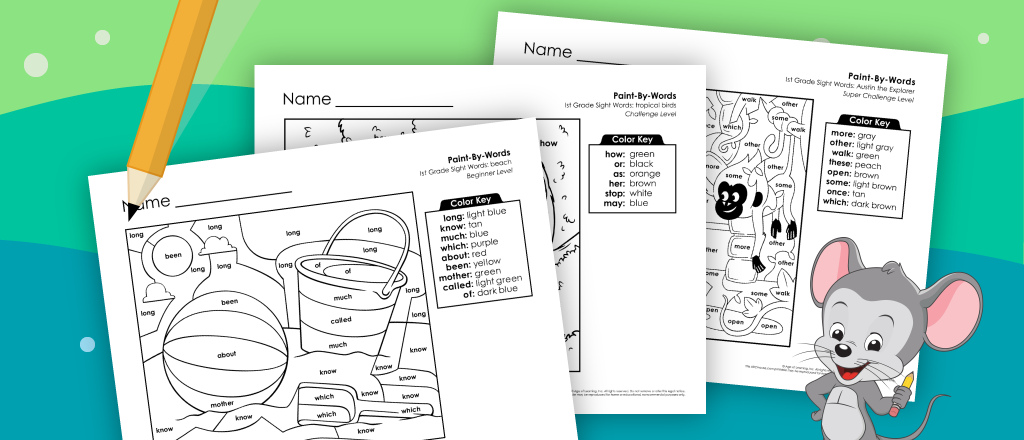
First Grade Level
These sight word worksheets for first graders feature three levels of difficulty, with each level including more words and smaller shapes to color.
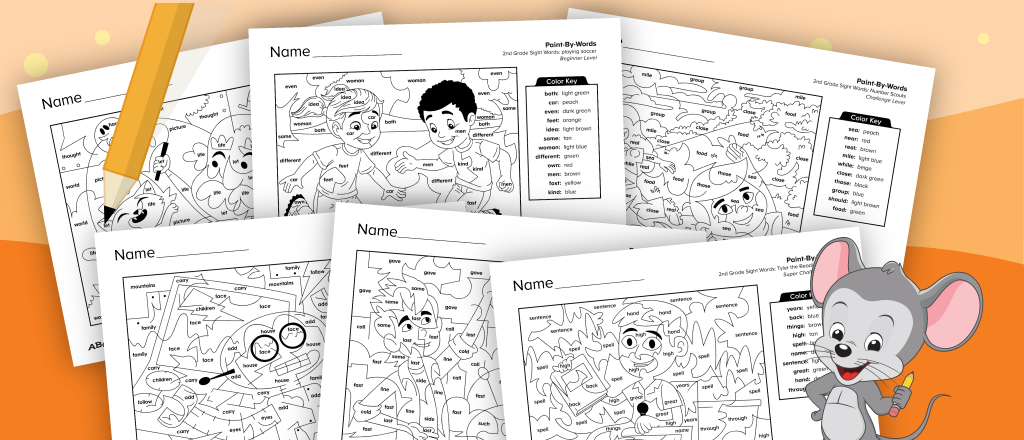
Second Grade Level
Children will work with a variety of words, ranging from review words such as off and tell, to more difficult words, like around and sentence.
Free Sight Word Games
ABCmouse sight word games offer interactive learning games focused on high-frequency words for kindergarteners through second graders. Our free educational games cover a variety of subjects for children aged 2–8 years old.
Additional Resources
ABCmouse offers preschool through second grade literacy and math programs, activities, and games designed by early education experts.
Reading Comprehension Worksheets
The ABCmouse reading comprehension worksheets are designed for kindergarten and up and give your child an opportunity to practice their literacy skills.
Browse →
10 Easy Steps to Help a Child to Read
Check out our simple ideas and tips that can help your child on their path to becoming a fluent reader.
Browse →
Hands-on Math Activities
Explore a variety of engaging activities that can strengthen math skills for children in preschool through second grade.
Browse →
ABCmouse’s expert advice review process:
Our team of ABCmouse Curriculum Experts, made up of talented professionals in early childhood education and development, take a close look at educational content and learning claims. They put in the effort to make sure our information is accurate and current. We have a certified educator or another respected authority review the content, matching their expertise with the topic at hand. They’ll make sure the content is thorough and follows the latest research and educational guidelines. If they think we can make things even better, they’ll chat with our editorial team, and we’ll make those improvements right away. Only after a reviewer gives their thumbs-up does a piece of content get the official stamp of approval in the byline.


